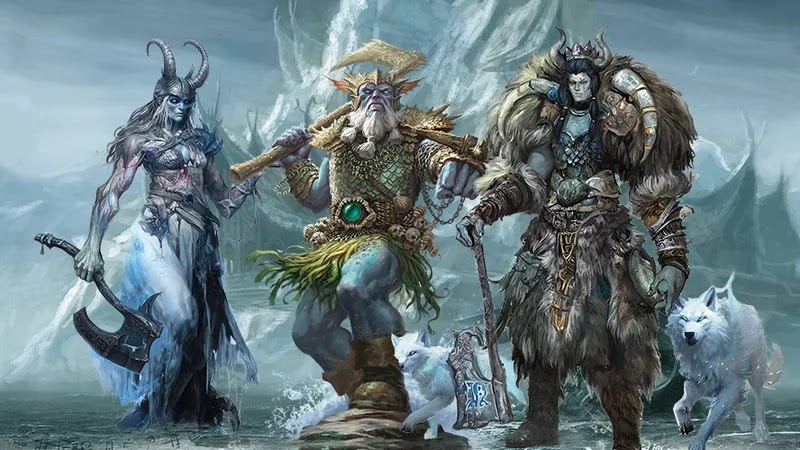Image: Wizards of the Coast Ilya Shkipin drew and generated left side giant.
A creator working on the most recent Dungeons & Dragons sourcebook, called Bigby Presents: Glory of the Giants!
The author has admitted that he used AI (AI) to create "certain details or polish and editing" in the latest artwork. Ilya Shkipin the artist at issue originally made this admission on X the social media site.
While Shkipin has since removed the posts, screenshots of his post remain the confession.
This has raised concerns regarding disclosure and the use of AI-generated images within the sourcebook, and concerns being expressed by both Dungeons & Dragons (D&D) as well as the tabletop role-playing game (TTRPG) groups.
Background:
Shkipin's disclosure shows the extent to that AI technology is integrating to creative methods. Shkipin has been reported to have used AI art generators like Pika Labs AI and also has an NFT marketplace operating that is based on super rare.
But both NFTs as well as AI-generated art have been criticized in some circles.
The discovery of the possibility that AI art was employed to create the D&D sourcebook has led to an open discussion within the community on the ethics and implications surrounding AI and AI in creative endeavors.
Details of Shkipin's Process:
Additional images taken by io9 confirm Shkipin's utilization using AI artwork generators.
However, during the creation as well as the submission process of art the generators weren't sufficiently advanced to produce full images.
Shkipin explained this in private messages to other people and stated that the art was mostly digitally created. Comparing the initial sketches to the final artwork from Bigby Presents demonstrates the incremental improvement made by AI technology.
Wizards of the Coast's Response:
A source from Wizards of the Coast, the publisher of Dungeons & Dragons, has said that the team did not know about Shkipin's use to employ AI technology in creation of this sourcebook.
They also emphasize that the book's content was generated by an AI. In response to the incident, Wizards of the Coast has announced its intention to amend its guidelines in order to stop similar incidents from happening again in the near future.
This incident has brought to light the need for more visibility and understanding for artists on the application in the use of AI tech in their creation process.
Broader Implications:
The use of AI-generated art in popular sourcebooks such as Bigby Presents raises many more general questions and issues.
Some argue using AI can harm the process of creativity and undermines the importance of human expression.
Others argue that AI could be a transformative instrument that can enhance and strengthen the human creative process.
The debate over the application of AI in the field of art isn't restricted to the gaming industry and is applicable to other fields of creativity too, such as literature, music and film.
Ethical Considerations:
Use of AI in art raises ethical concerns. With the advancements in AI technology it is possible to run the risk of copyright infringements when AI algorithms create art that closely resembles previous artworks.
Furthermore, questions about fair compensation for artists arise when works produced by AI are offered for sale as NFTs.
As AI is becoming more prominent in the creation process, it becomes imperative to establish ethical guidelines to safeguard artists' rights and guarantee the fairness of practices.
The Future of Illustrations:
Shkipin's admission has led to discussions regarding the direction of illustration in both gaming and art.
Many believe that AI-generated art can transform the field by speeding up the creative process and expanding the possibilities for creativity.
But, critics warn of the possible devaluation of human creativity and the loss of traditional techniques for art.
Finding a equilibrium between using AI and the preservation of human touch remains a huge problem.









0 Comments